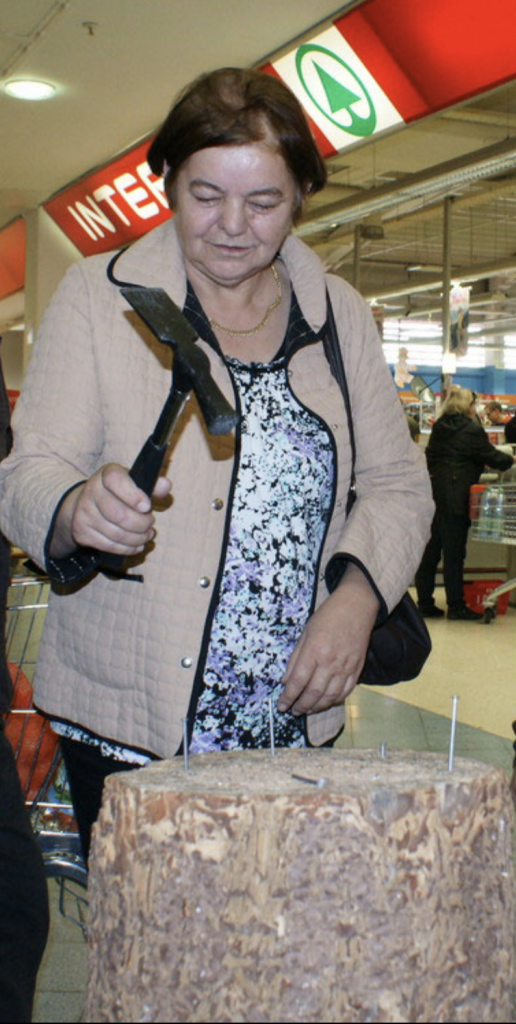In the Mundartgarten there’s also a plot set out for flowers and the wonderful names they have in dialect. In this entry we’re looking at the term “Naglstock,” which appears in Mathilde Ressmann’s poem “Wenn ih niama bin”:
Tua die Vogalan fuattern,
wenn ih niama bin,
und die Bamlan beguatn
im Obstgartlan drin.
Die Blüamlan begiaßn,
bind den Rosnstock ån,
könnt sein, dåß er sunsta
nit gråd wåchsn kånn.
Schneid åb ane Blüah
zur Pfingstrosnzeit,
am Åltår zu Fronleichnam
is der Plåtz schon bereit.
Tua mein Naglstock hüatn
und mein Rosmarin.
Gelt, tuasts nit vergessn,
wenn ih niama bin?
A Liachtle lås brennen,
damit ih dih find,
sollt ih dih amål suachn,
lei noch Welle und Wind.
The word under inspection is in the first line of the fourth stanza: “Tua mein Naglstock hüatn.” Let me tell you about the process of how I read a dialect poem. First, I read it through quickly and silently. Then, I’ll go back and read it a bit slower while focusing on words I might not know and see if I can figure them out from the context. I usually fall into the trap of reading some words as being literally the sum of their constituent parts (that’s what you’re going to see in just a second). At some point in this back and forth of deciphering words’ meanings, I’ll read the poem aloud in my best approximation of the dialect. The difficulty here is that the dialect in Ressmann’s poems doesn’t necessarily conform to the dialect I most frequently encounter. An example of this is the loss of rounding on fronted vowels like /y/ (<ü>) [another tattoo idea!]; in the dialect I hear the vowel is no longer rounded and is pronounced as /i/ ~ /e/ (I’d clearly need to do some recordings to tease out exactly where it is in the mouth). After I’ve done all of this, I ask native German speakers from Carinthia, from other parts of Austria, and from Germany if they know what the word means (I don’t always have easy access to speakers from each group, so sometimes my data is mixed. Since it’s informally collected, I’m fine with that.). You can imagine that some specialized terms are also opaque to native speakers.
So, on to the investigation we go! When you type “Was ist ein Naglstock?” into Google, this is the first entry, which clearly is setting me on the wrong path as you’ll see. And why would I not believe Google?


This explanation makes sense. There’s a tree trunk (probably like a piece cut off and not still in the ground, but who knows?) that people drive nails into. Ok. “Tua mein Naglstock hüatn.” Got it–Protect the nail trunk! (this would make a great t-shirt with an image of a “Naglstock.” Maybe the person won a game of “Naglstock” and wants that memory to be preserved. Makes total sense–take care of my trophy when I’m gone. If you already know what this word means, you’re probably howling by now.
The answer is coming soon to what a “Naglstock” is!
